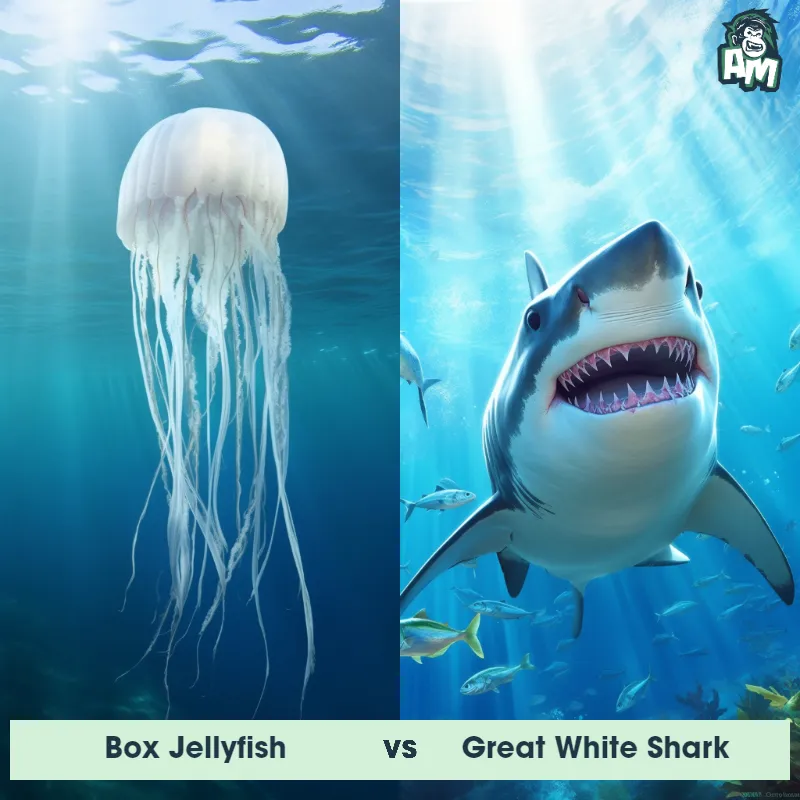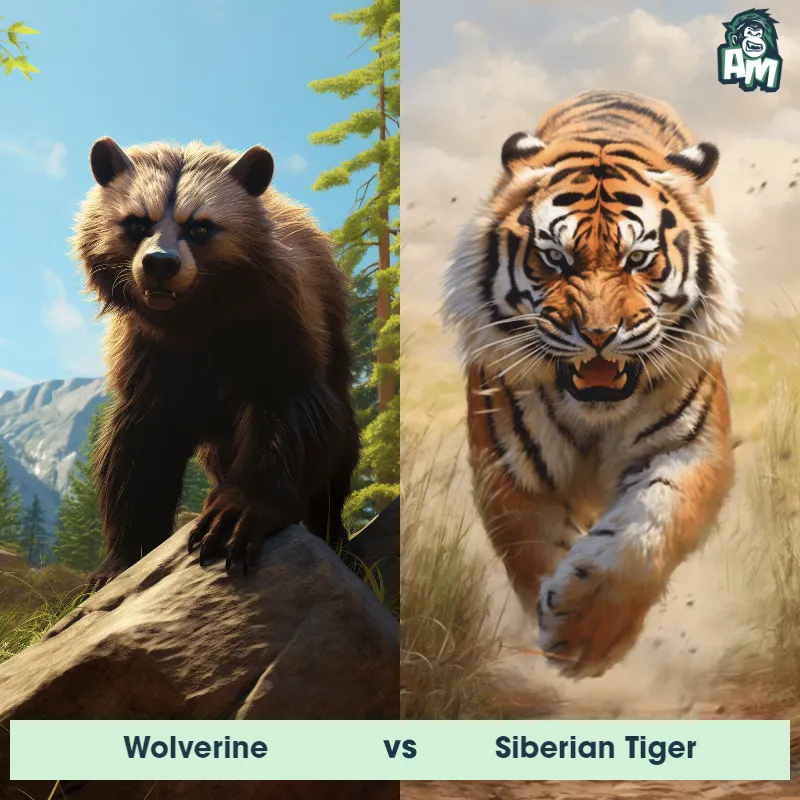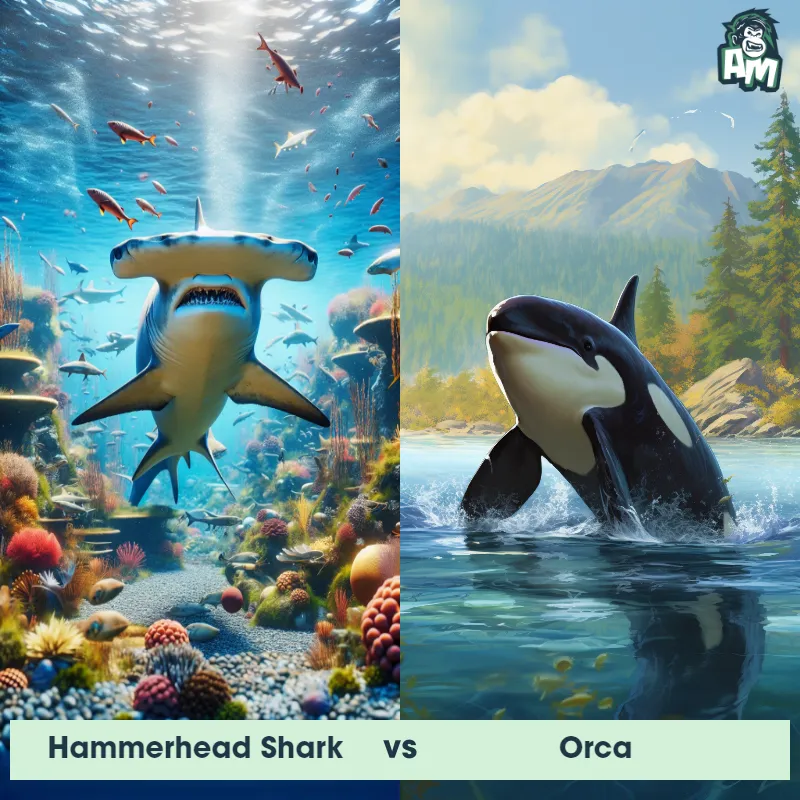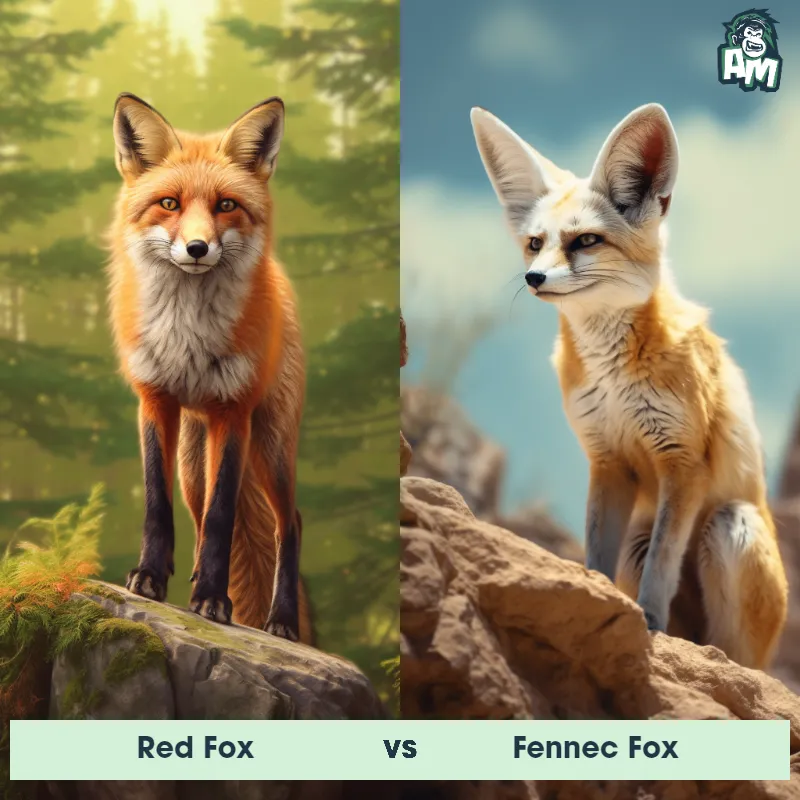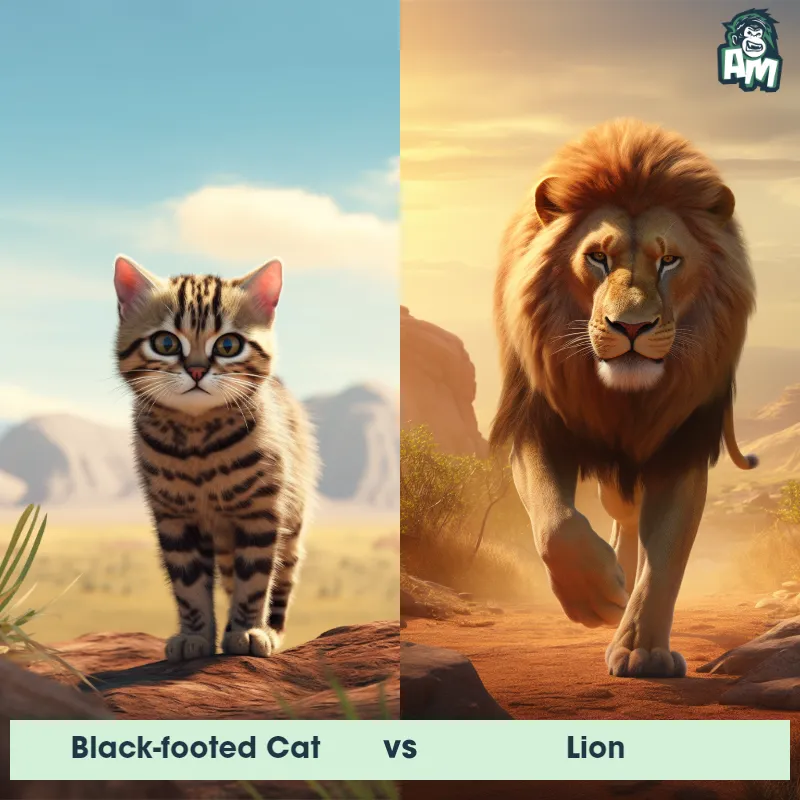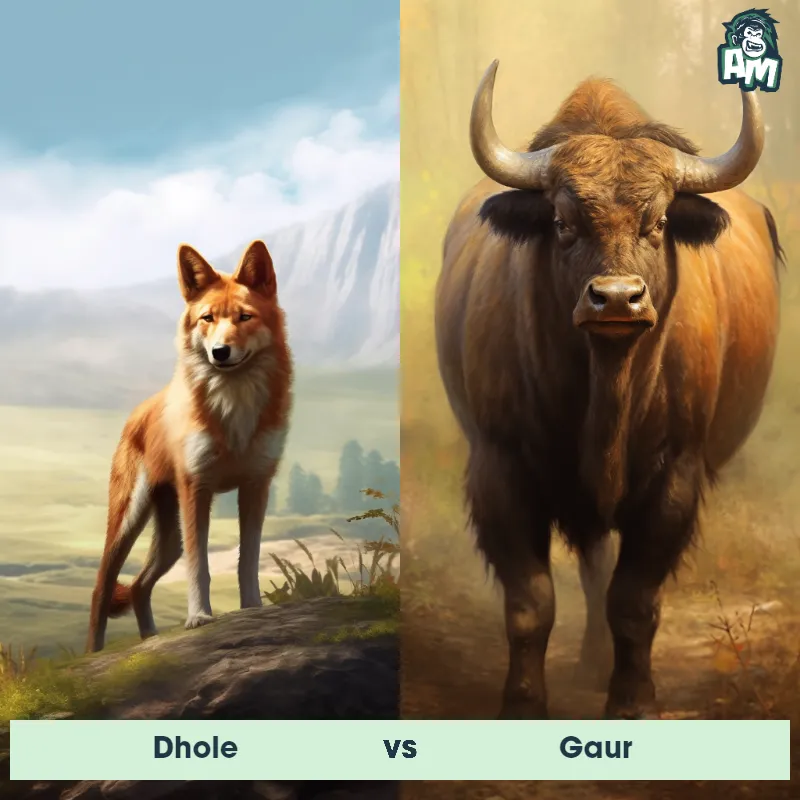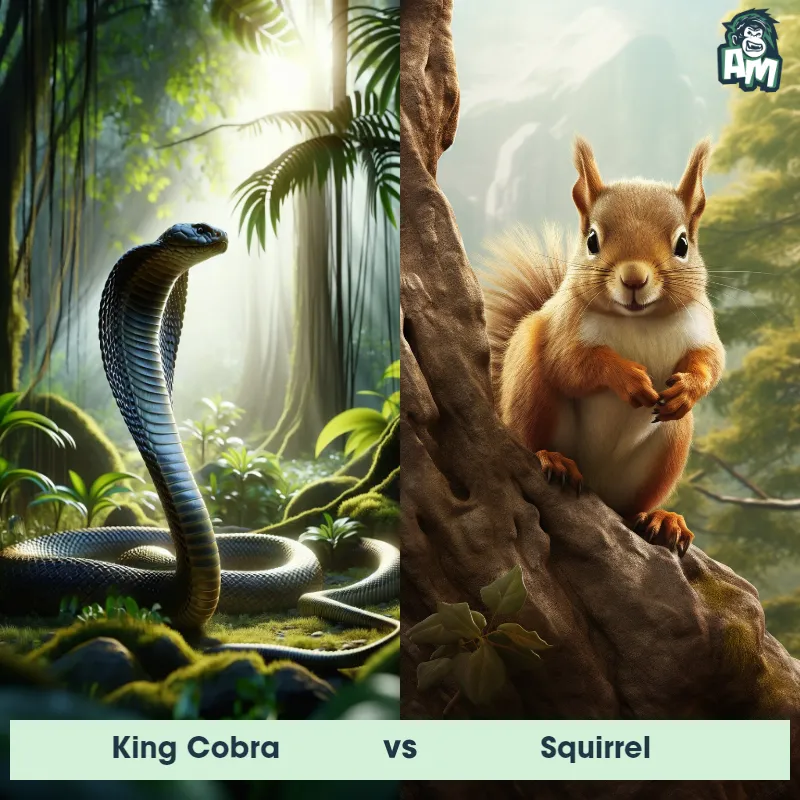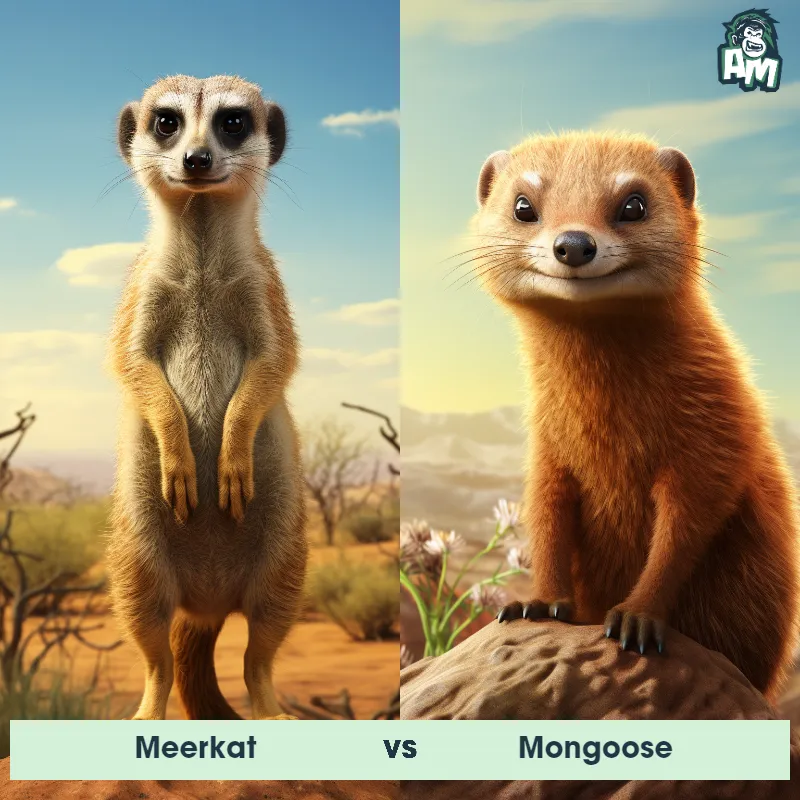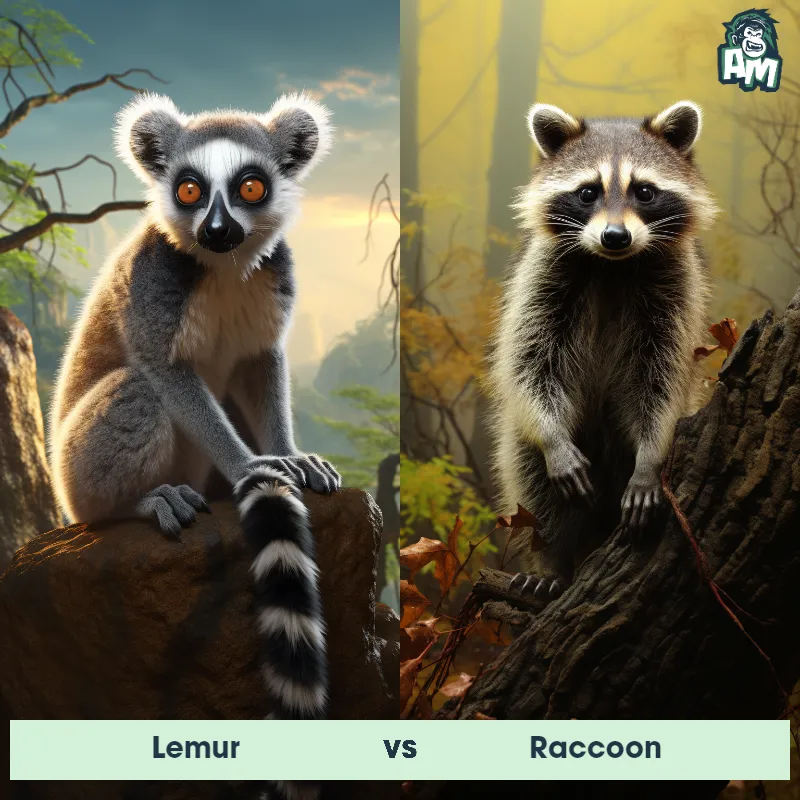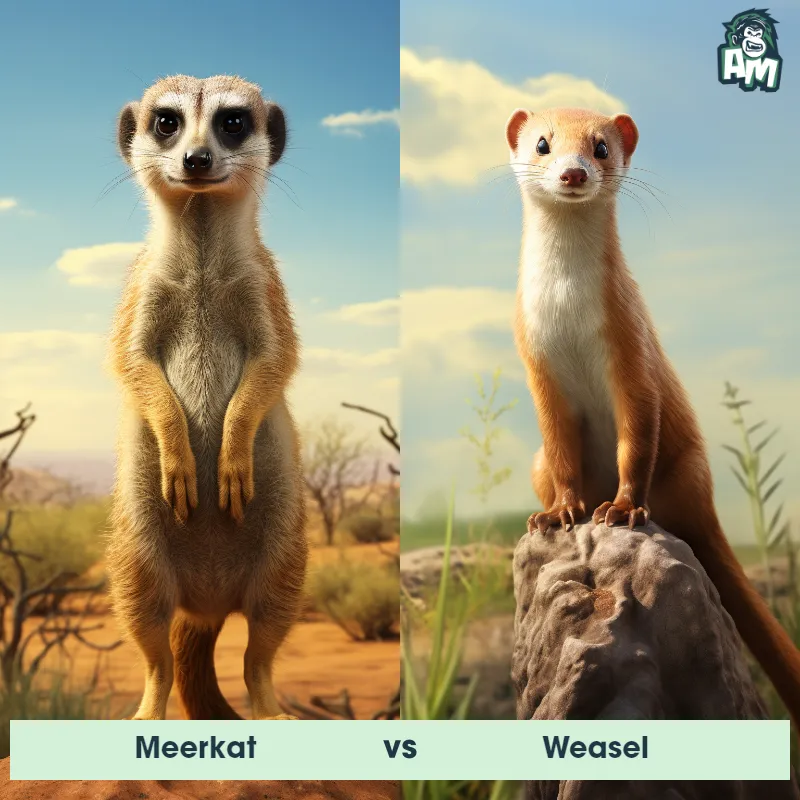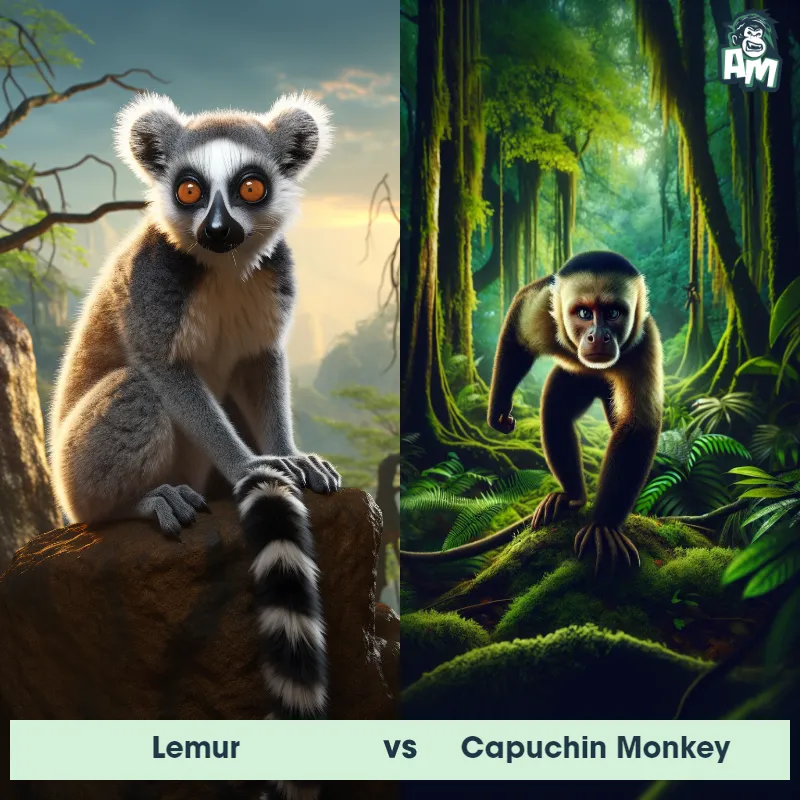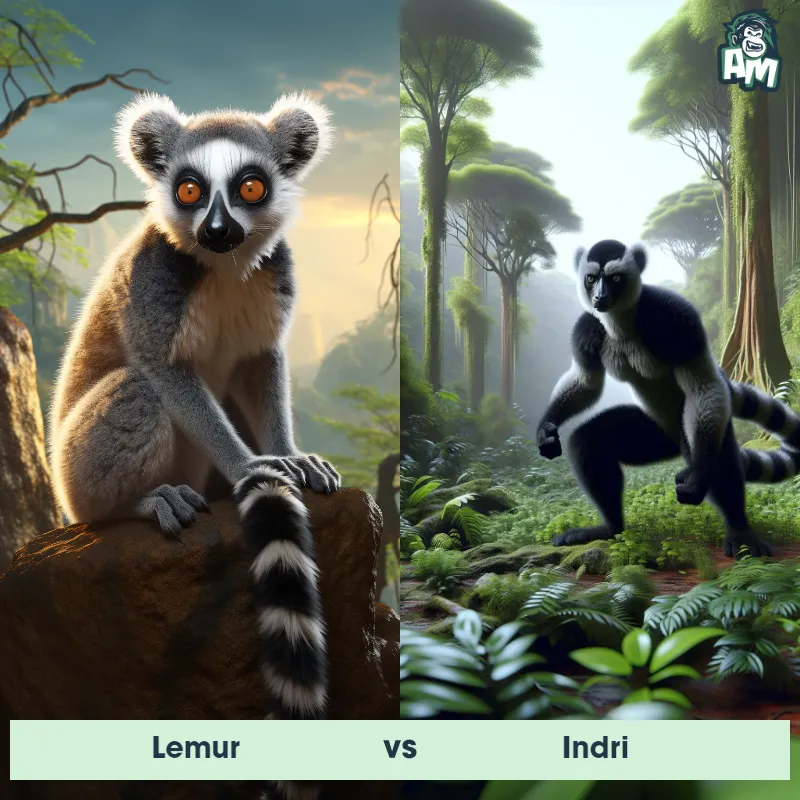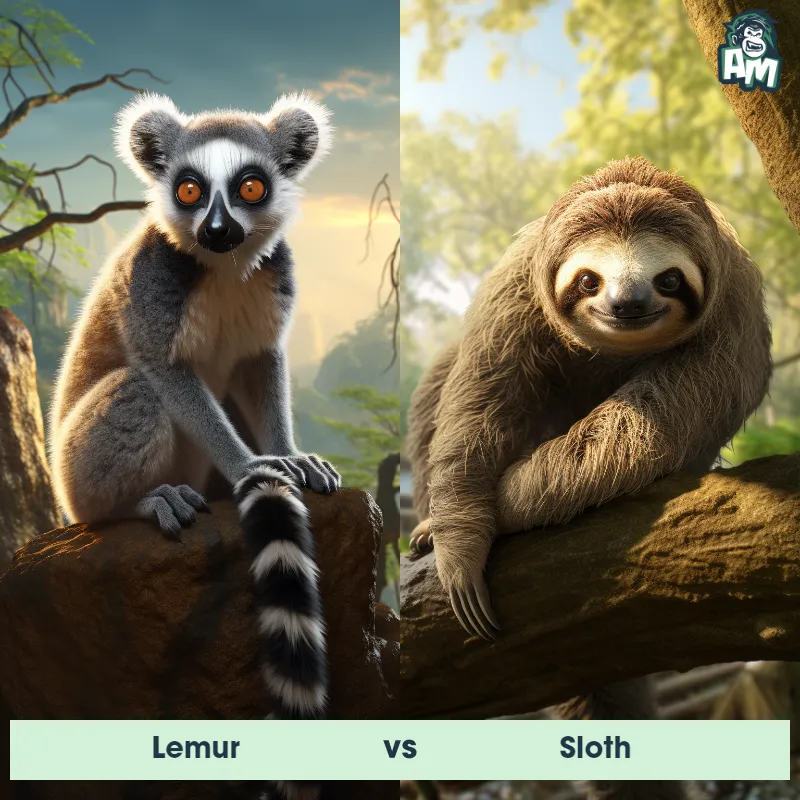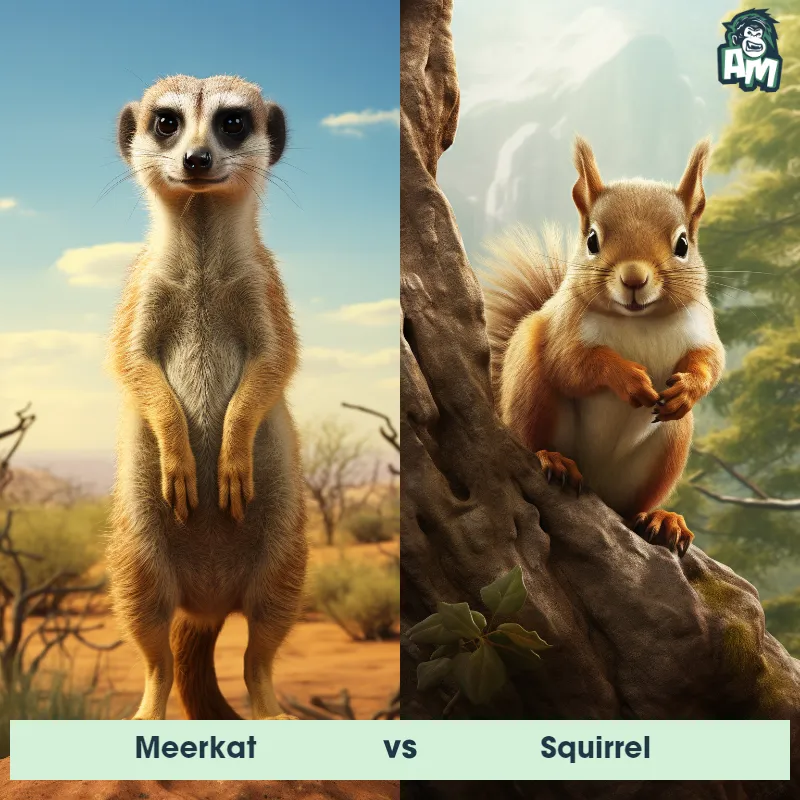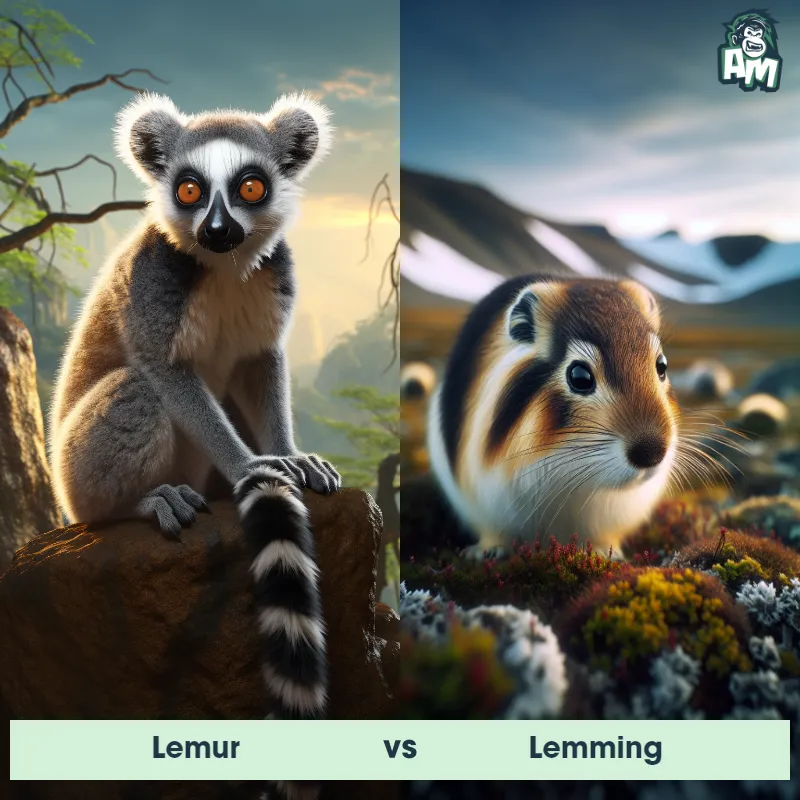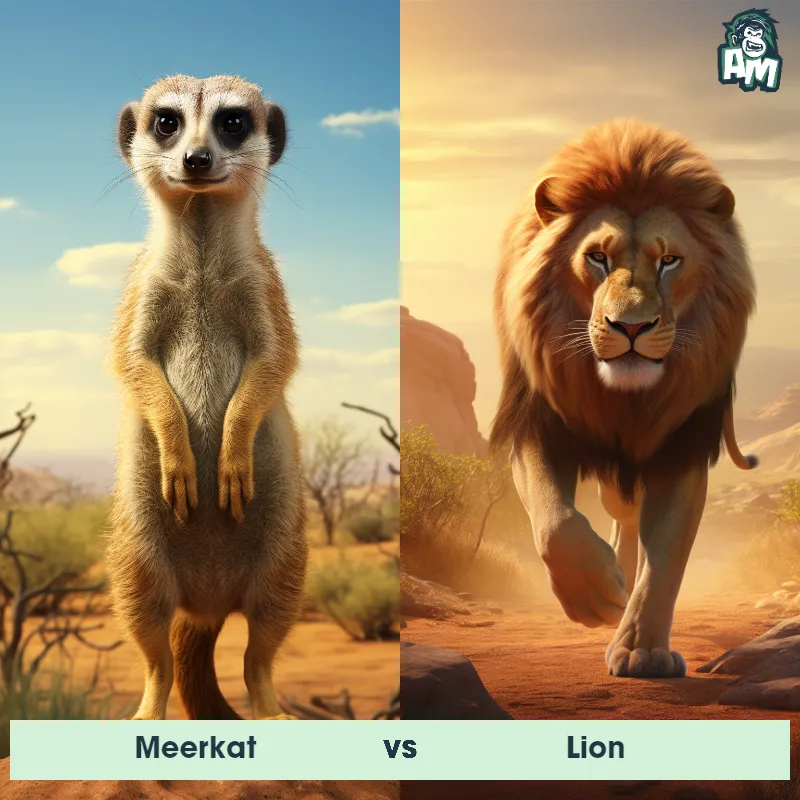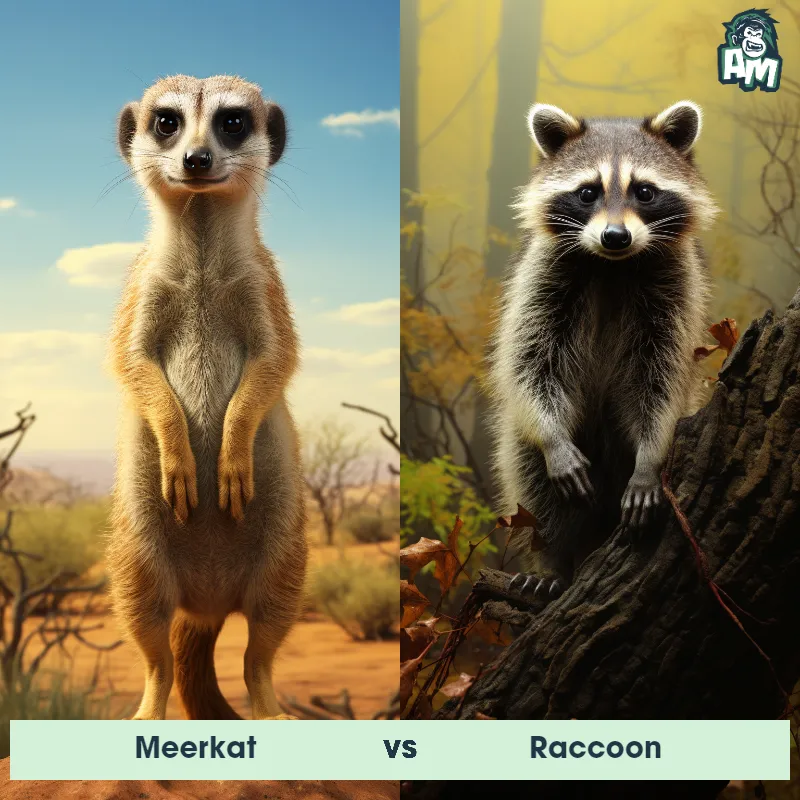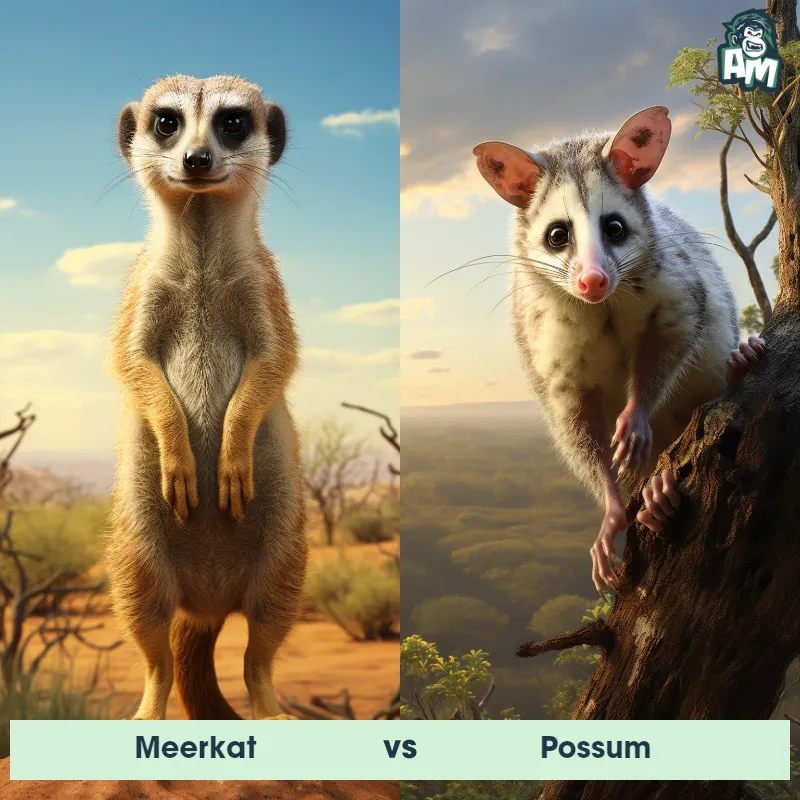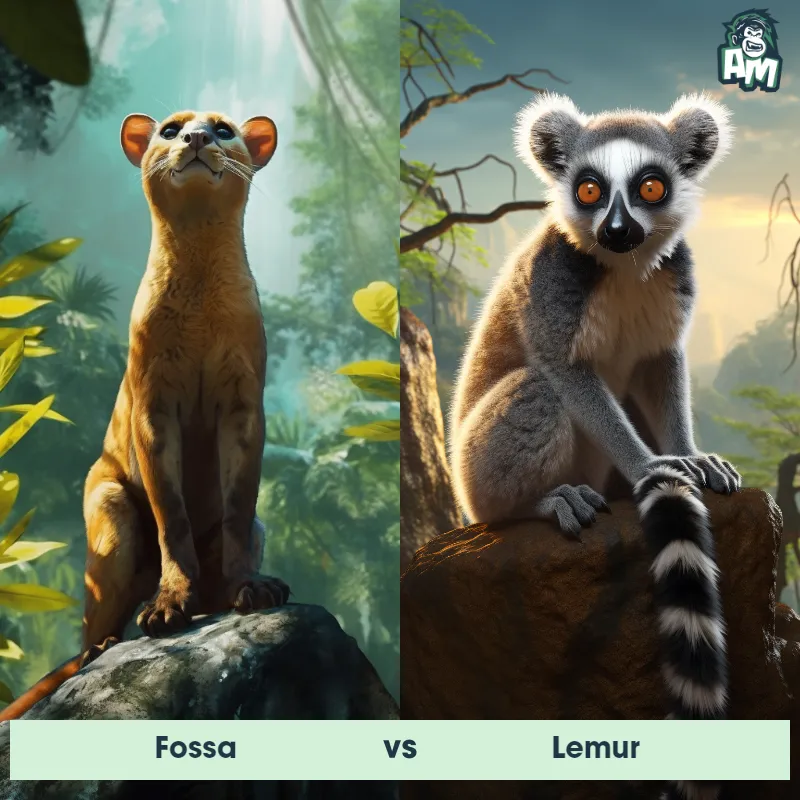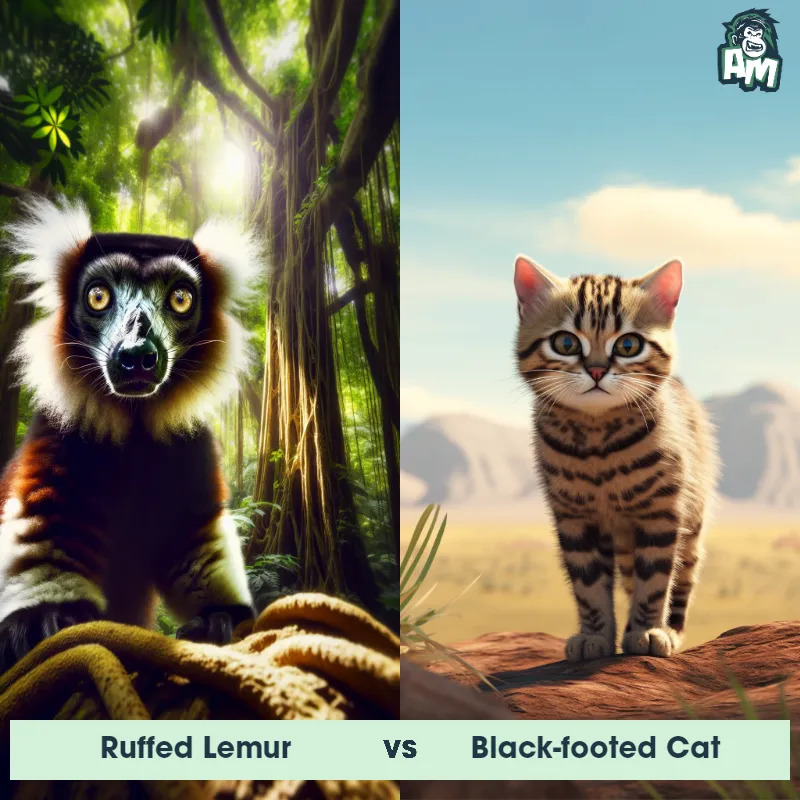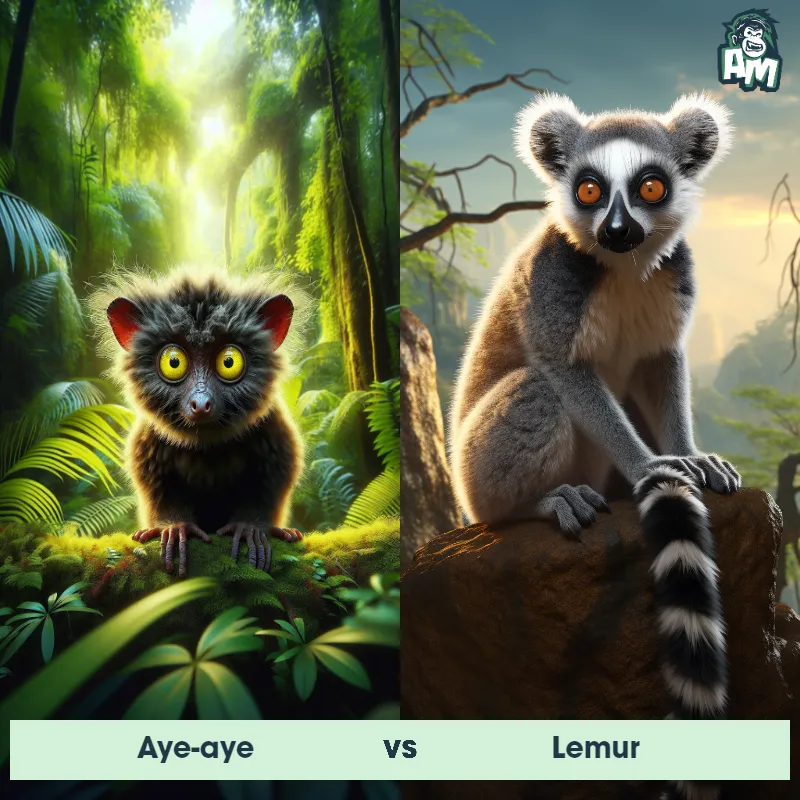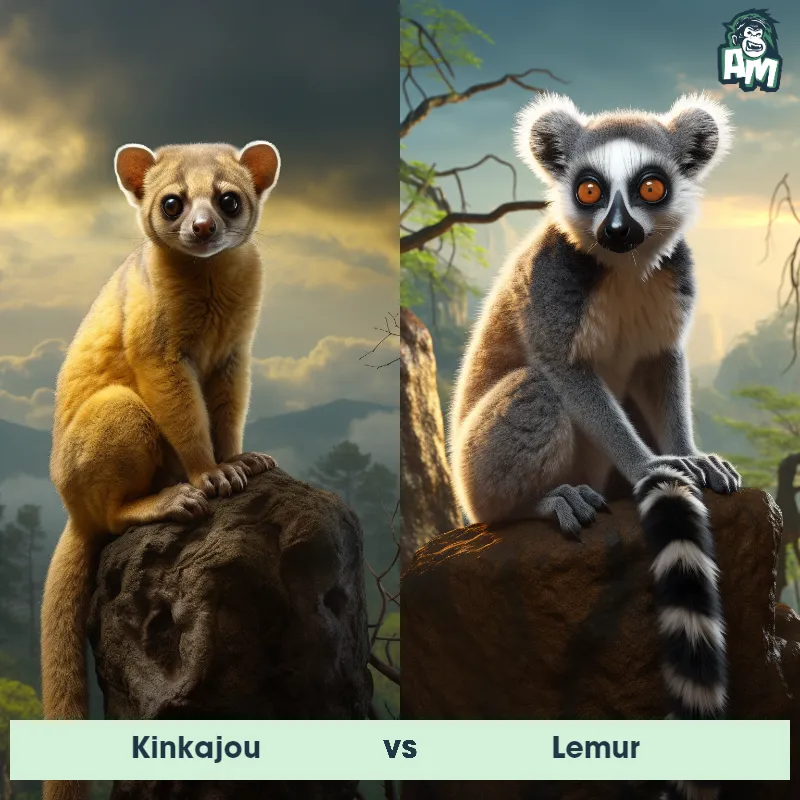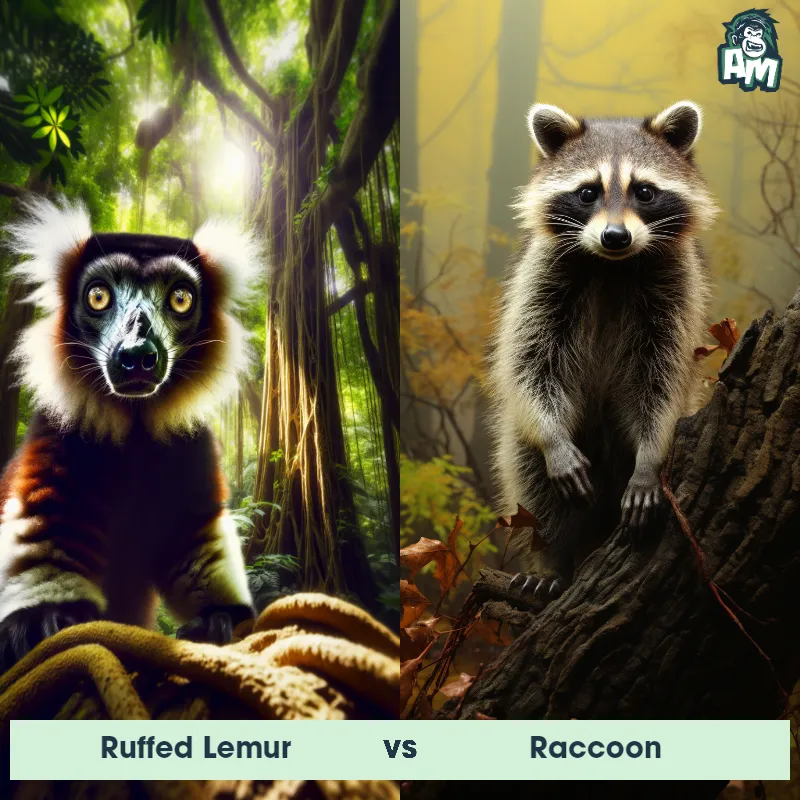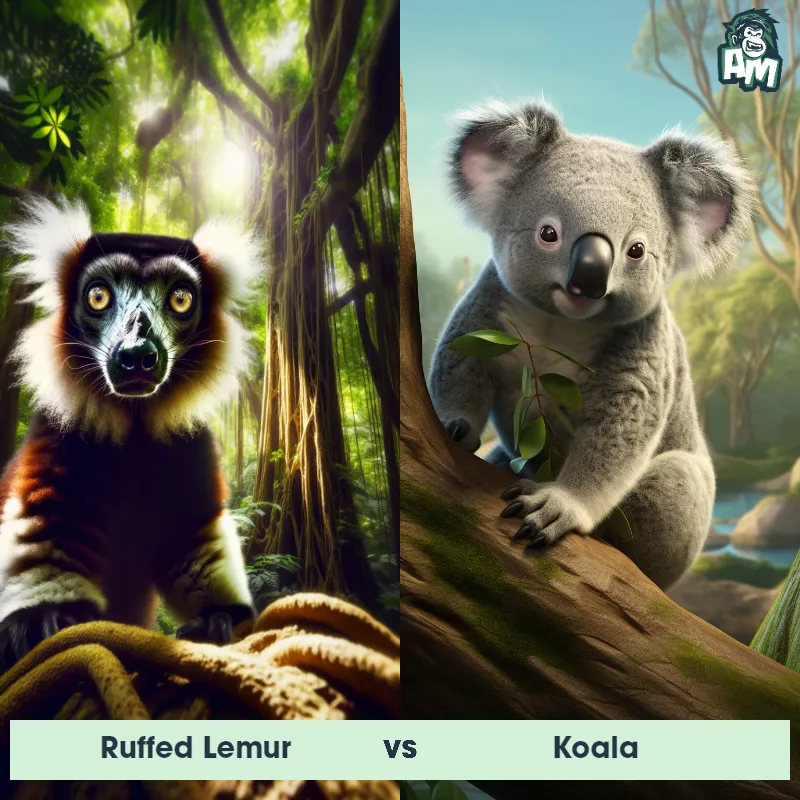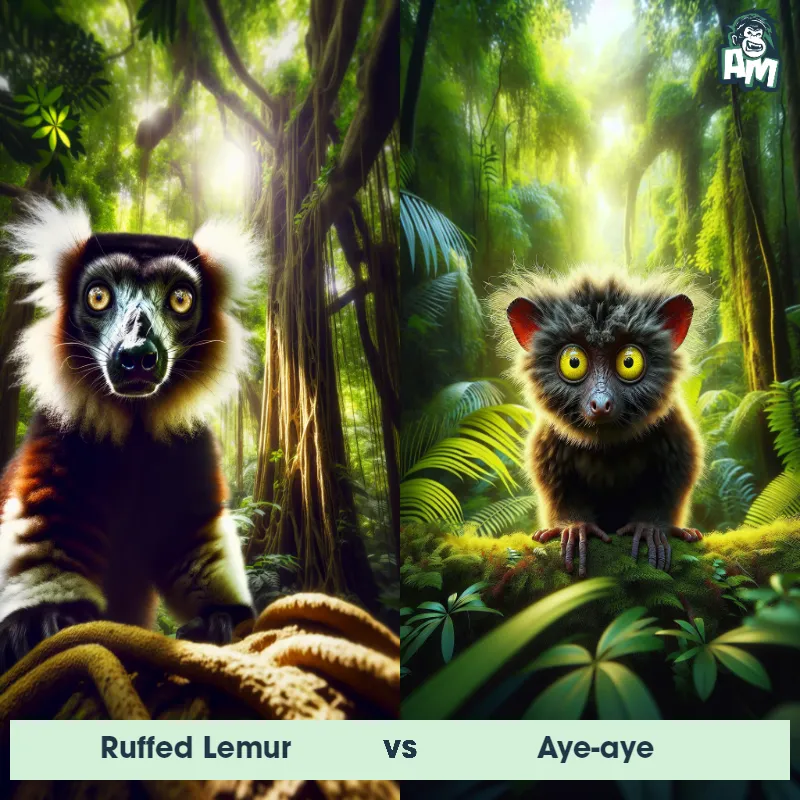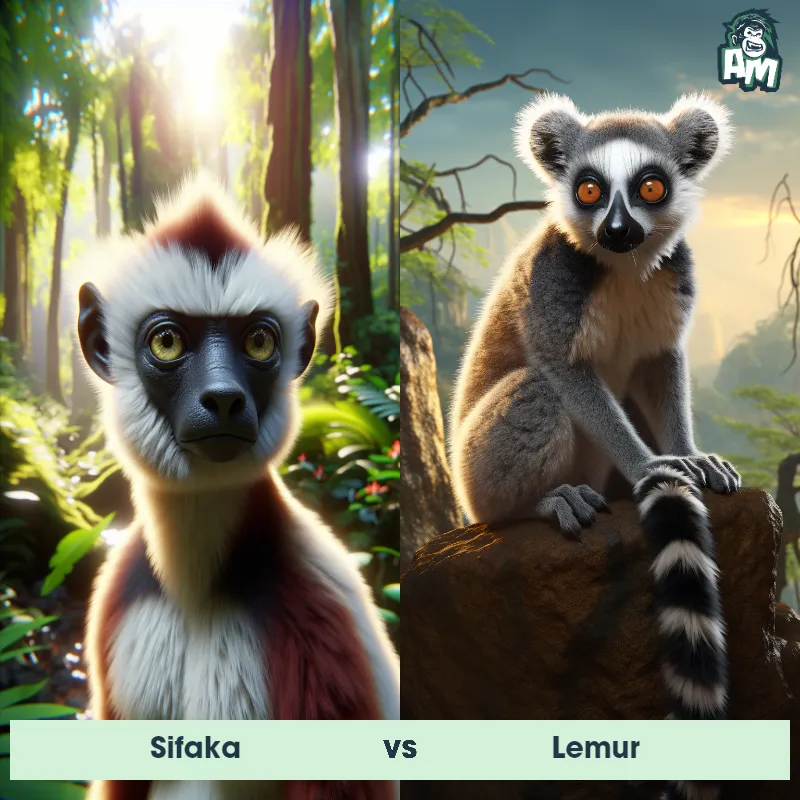Meerkat vs LemurSee Who Wins

Ladies and gentlemen, welcome to an electrifying showdown here at this incredible venue. Two remarkable creatures are about to engage in a fierce three-round confrontation. Fasten your seat belts—the Meerkat and the Lemur are ready to rumble!
Contender 1: Meerkat
The Meerkat, a member of the mongoose family, is a small mammal known for its upright posture and social behavior. Meerkats are characterized by a slender, elongated body that can measure up to 14 inches, excluding the tail, which is around 10 inches long. They have a light gray to brown coat with darkly lined eyes that help protect against the sun's glare. Living in groups called clans or mobs, Meerkats reside in complex underground burrows in the arid regions of southern Africa, and their diet primarily consists of insects, spiders, and small mammals.
Fun Fact: Meerkats have a unique system of rotating tasks within their group, with some serving as lookouts for predators while others forage for food, showcasing a high level of social organization.
Contender 2: Lemur
The Lemur is a type of primate known as a prosimian, native to the island of Madagascar. Lemurs come in various sizes and colors, but they are typically characterized by a pointed snout, large eyes, and a long tail that can be longer than their body. Many lemur species have a thick and woolly fur that ranges in color from reddish-brown to gray and black. Lemurs are arboreal animals, spending most of their time in trees, and their diet consists of fruits, leaves, flowers, and insects.
Fun Fact: Lemurs communicate with each other using a variety of vocalizations, body postures, and scent markings, exhibiting a complex and intriguing social structure.
Matchup Stats
| Meerkat | Lemur | |
|---|---|---|
| Size | 14 inches (35.56 cm) | Varies by species, 3.5 inches to 2.5 feet (9 cm to 76 cm) |
| Weight | 1.5 lbs (0.68 kg) | Varies by species, 1 ounce to 20 pounds (30 grams to 9 kg) |
| Speed | 20mph (32km/h) | 20mph (32km/h) |
| Key Strength | Immunity to certain types of venom | Agility and speed |
| Biggest Weakness | Small size and lack of physical strength | Small size and lack of aggressive behavior |
Current Votes
Meerkat vs Lemur
See Who Wins
View More Matches
Looking For More?
Similar Matches
Scientific Stats
| Meerkat | Lemur | |
|---|---|---|
| Scientific Name | Suricata suricatta | Lemuriformes |
| Family | Herpestidae | Lemuridae |
| Habitat | Arid regions, savannas, and grasslands | Forests and jungles |
| Geography | Southern Africa | Madagascar |
| Diet | Insects, spiders, and small mammals | Fruits, leaves, flowers, and insects |
| Lifespan | 12 years - 14 years | 16 years - 25 years |
Key Differences between Meerkat and Lemur
- Facial Features: Meerkats have small, round ears positioned on top of their head, a pointed snout, and prominent black eyes that stand out against their light fur, whereas Lemurs possess larger, more oval-shaped ears, a relatively flat face, and their eyes can range from yellow to amber or green.
- Coloration: Meerkats have a sandy to light brown fur color with distinct dark patches around their eyes, resembling a mask, while Lemurs display a wide range of color patterns, including variations of gray, brown, white, and even vivid combinations of red, orange, and blue.
- Tail: Meerkats have long, slender tails that can reach around 7-9 inches in length, covered with short fur and ending in a small tuft of hair, whereas most Lemurs have long, bushy tails that can measure up to 22-25 inches and are often longer than their bodies.
- Habitat: Meerkats are native to the arid regions of southern Africa, inhabiting desert areas and open grasslands, while Lemurs are indigenous to the rainforests and dry forests of Madagascar, an island off the southeast coast of Africa.
- Size: Meerkats are considerably smaller than Lemurs, with an average length of 12-14 inches and a weight of around 1.5-2.5 pounds, while Lemurs can grow up to 18-22 inches in length and weigh between 5-20 pounds, depending on the species.
- Social Structure: Meerkats live in highly organized groups called mobs or clans, consisting of around 20-50 individuals, with a dominant pair that leads and rears most of the young, whereas Lemurs are generally solitary or live in small family groups, with some species exhibiting female dominance and others maintaining male hierarchical structures.



